You’re walking along a riverside path when you hear a splash in the water. You’re expecting a jumping fish when you see a furry creature paddling along. You watch as it gets closer to shore. But what is it? A beaver? An otter? Or…something else?
Semi-aquatic mammals – those species adapted to freshwater habitats – are found around the globe. In North America, these are among the most enjoyable wild animals to observe. But many people find identifying them confusing, especially as they look like a swimming blob of fur.
Countless times, I have heard excited hikers exclaiming “Beaver!” only to find a diminutive muskrat paddling around a pond.
Conservation efforts have greatly benefited species like beavers and river otters, so you have a great chance of seeing these in many parts of the United States and Canada.
Hopefully, this guide will help you identify North America’s common freshwater mammals.
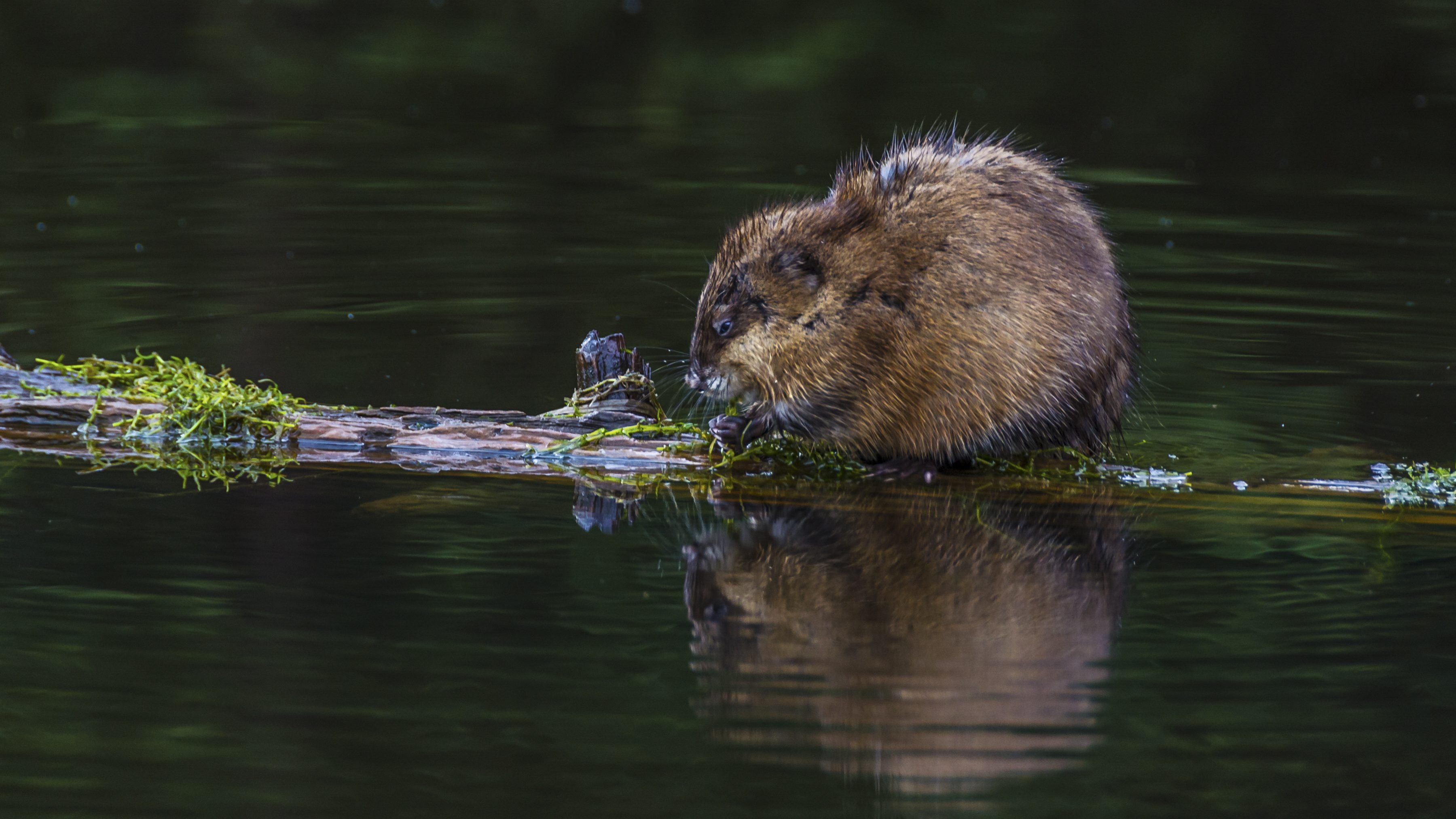
What’s that Mammal?
Many people find wildlife identification overwhelming. But let’s prepare you for success. First, check out my previous field guide to commonly misidentified mammals to learn how to avoid common pitfalls in wildlife watching.
A good field guide is indispensable and can help with range, habitat, size and key identifying features of each species. If you are interested in taking a deep dive (if you’ll pardon the pun), I highly recommend Glynnis A. Hood’s book, Semi-Aquatic Mammals. It covers 140 species of semi-aquatic mammals, representing 22 families, found around the globe. It’s must reading for mammal nerds.
Become a Member
Make a lasting impact for nature when you join The Nature Conservancy
When you see a mammal swimming in a lake, or running along a creek bank, there are some easy ways to narrow your identification. First, look for the tail. The tail often is a key identifying feature, and can help you narrow your ID. Look at the overall shape of the animal (does it look round or more streamlined) and at the fur (is it soft or coarse?).
Watch the animal’s behavior. Does it appear to be hunting, or is it foraging on streamside vegetation? Is it returning to a den? What is in its mouth? All these can provide important cues to help you make a confident, and correct, identification.
Now let’s look at the semi-aquatic species you’re likely to encounter.
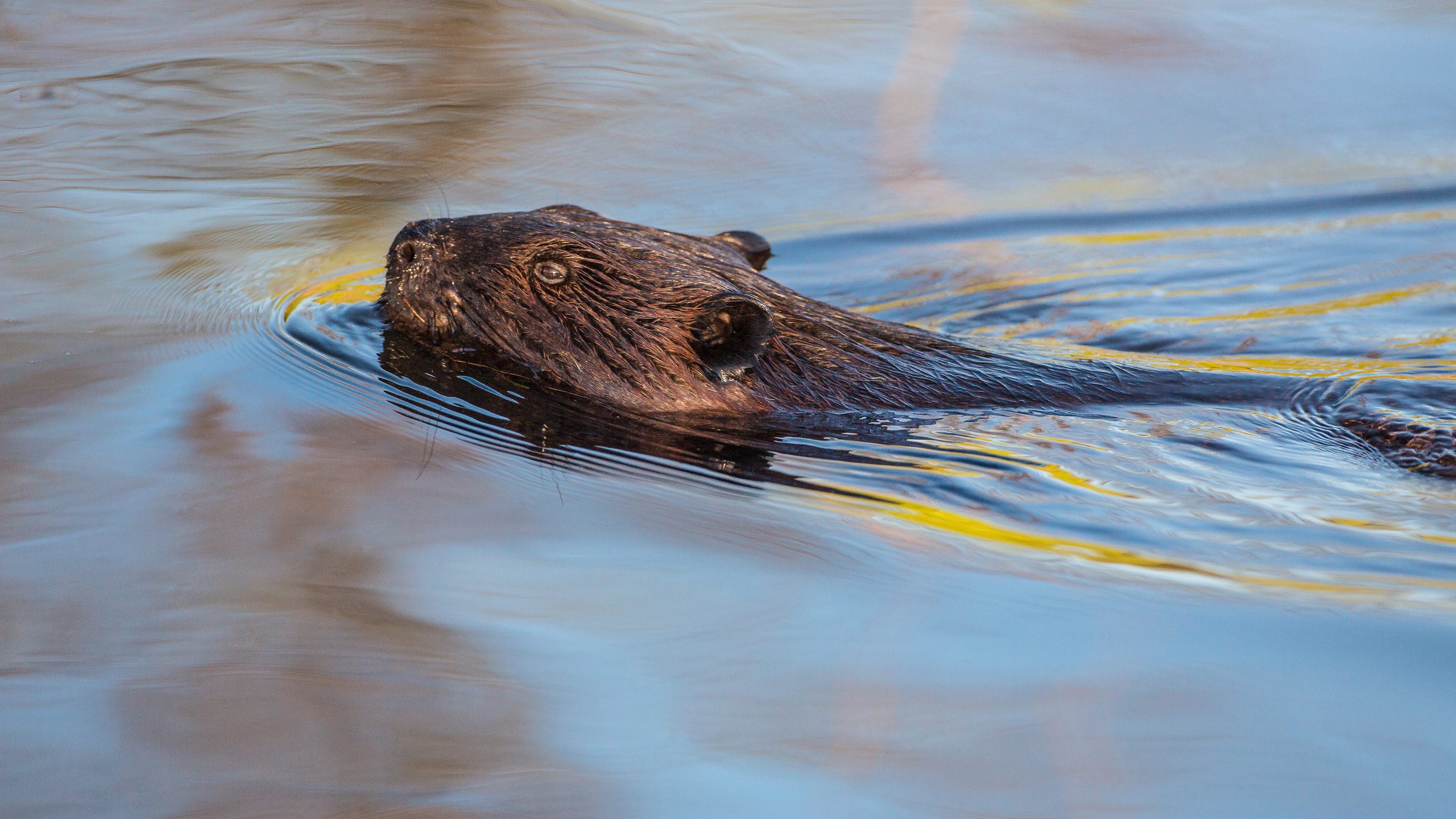
Beaver
The beaver is a charismatic species that most learn about as kids, and many want to see when visiting national parks and lakes. But is that swimming animal really a beaver?
The easiest clue is the tail. A beaver has a flattened, large, paddle-shaped tail. If you get a good look, it is unmistakable. If alarmed, the beaver will slap its tail on the water, causing an alarmingly loud smack.
Size can be difficult to determine when you’re in the field, when it’s just head poking up out of the water. But a beaver looks big; an adult can weigh 50 pounds or more. They have a roundish appearance when on land.
The beaver’s dam-building proclivities, of course, are well known. If the animal is carrying a tree branch, there’s a good chance it’s a beaver. And other sign can offer clues. Beavers gnaw down trees, leaving distinctive clippings and gnaw marks. A beaver dam, built of sticks, backs up streams and small rivers. And there will often be a large beaver house, also built of sticks.
But note this: Other mammals, including mink and river otters, can be found near beaver dams, so just because you see a furry creature near beaver activity doesn’t mean it’s a beaver.
And beavers in larger rivers often live in dens built in banks, so you may see a beaver but not a beaver dam.
Many conservationists know the tale of the beaver’s decimation by the fur industry, and eventual recovery. Beavers are now found widely across the continent, to the point they’re (often unfairly) considered a nuisance in places. But beavers are essential in shaping rivers and entire ecosystems. For a wonderful account of their important role, and human-beaver relations, I highly recommend Ben Goldfarb’s book, Eager: The Surprising, Secret Life of Beavers and Why They Matter.
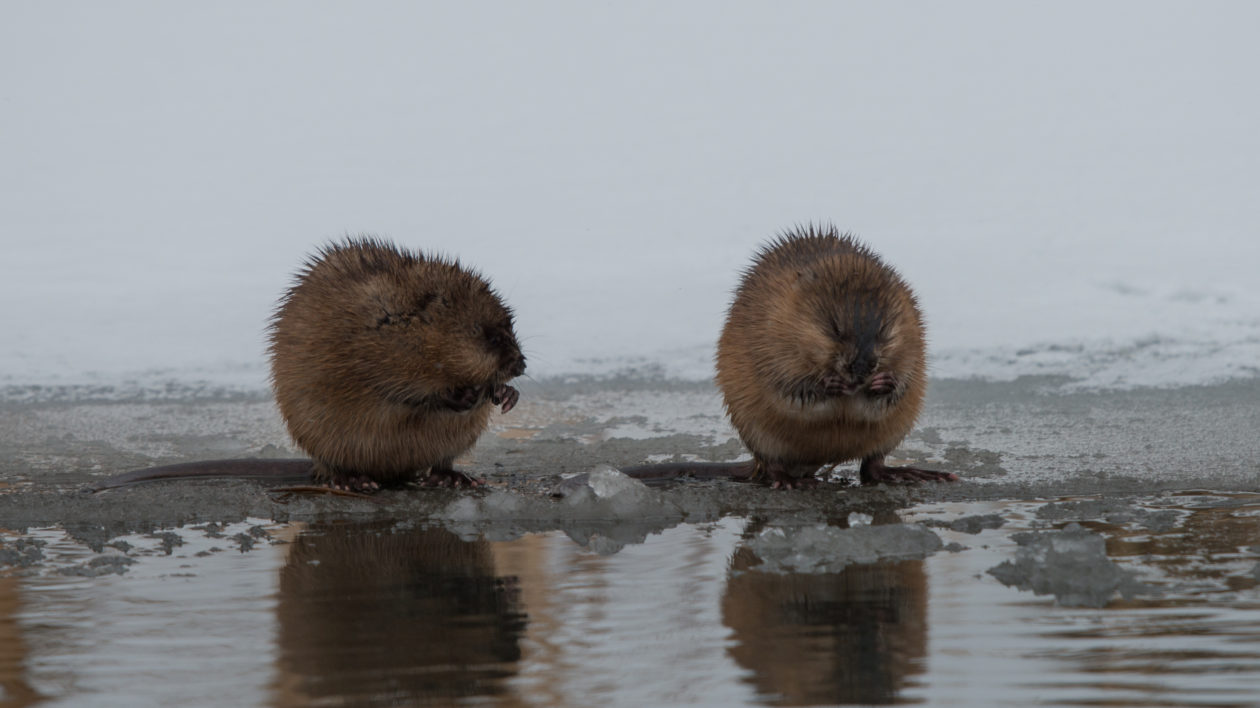
Muskrat
I have found that this furry creature is the one most often mistaken for a small beaver. There are some superficial similarities, to be sure. But a close look can make identification easy.
A muskrat’s tail is rat-like; it lacks fur and is not a paddle. A muskrat is much smaller, it weighs 3 or 4 pounds at most. It looks like a little round fur ball.
A muskrat often has vegetation in its mouth, but it’s usually not a tree branch. Look closely and you may see it paddling around with a cattail or large reed. It does build mounds, but again, these mounds are built of cattails and green vegetation, not tree branches.
Muskrats are often active and dawn and dusk, but I have seen them out foraging at all times of day.
An often-overlooked aspect of wildlife viewing is the mental aspect. Be honest: you probably want to see a beaver more than you do a muskrat. So, the first thing you have to do is make sure your mind isn’t turning a muskrat into a beaver. Trust me, it happens.
Note that southern Georgia and Florida are home to the round-tailed muskrat, which looks like a smaller muskrat with, yes, a rounder tail. Their ranges do not overlap. Count yourself lucky if you see one; it is an incredibly difficult animal to spot even for hard-core mammal watchers.
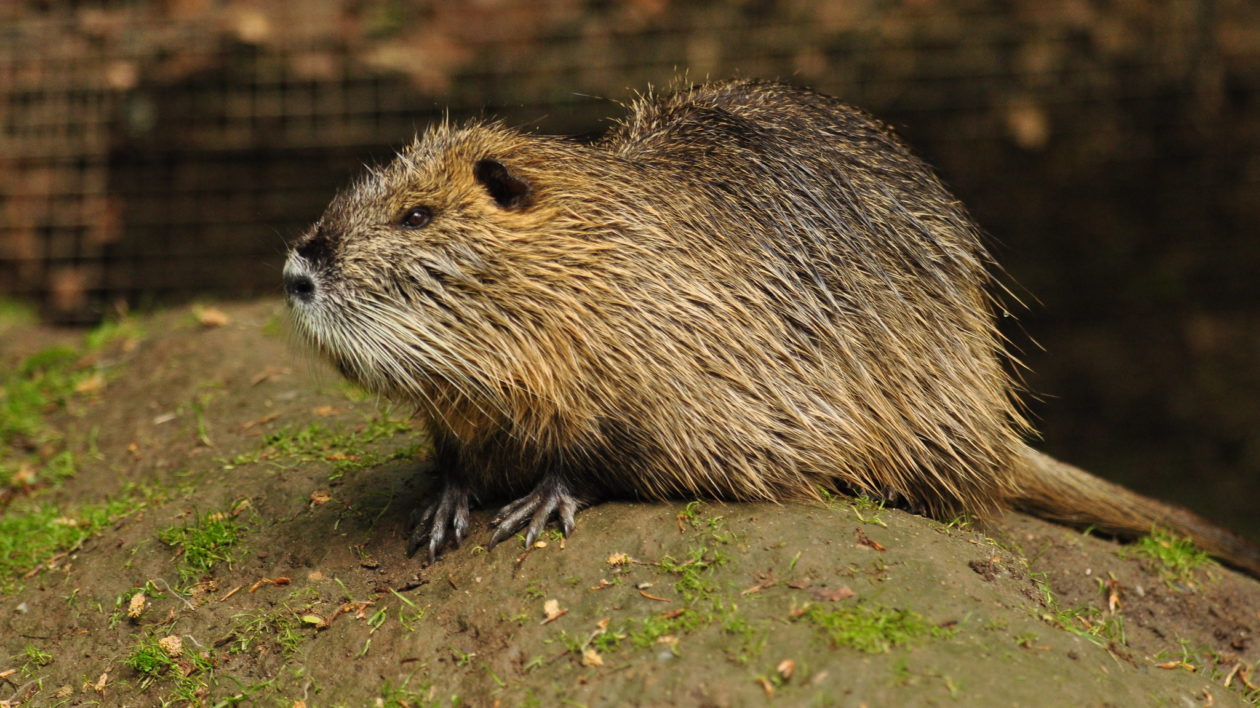
Nutria
The nutria, a South American species, was imported to the United States for fur farming. Nutrias escaped during floods or were released when fur markets went bust. They are now most abundant in the southeastern United States but are also found in the mid-Atlantic region and parts of the Pacific Northwest.
The nutria is smaller than a beaver but larger than a muskrat. In the field, it looks quite large. Again, focus on the tail, which is hairless and rat-likel. Its fur also looks quite coarse, rather than smooth, even when wet.
The nutria’s incisors are orange, and I have often found that you can easily see these teeth when the animals are feeding. Most of my sightings have been of this animal on land, enabling a close look at these key identifiers.
There have been recent reports of another non-native aquatic rodent, the capybara, in Florida. This is the world’s largest rodent, and can reach the size of a Labrador retriever. It is a spectacular sight to see herds of them in wetlands and along rivers in South America. But let’s hope this doesn’t become another invasive species established in the United States.
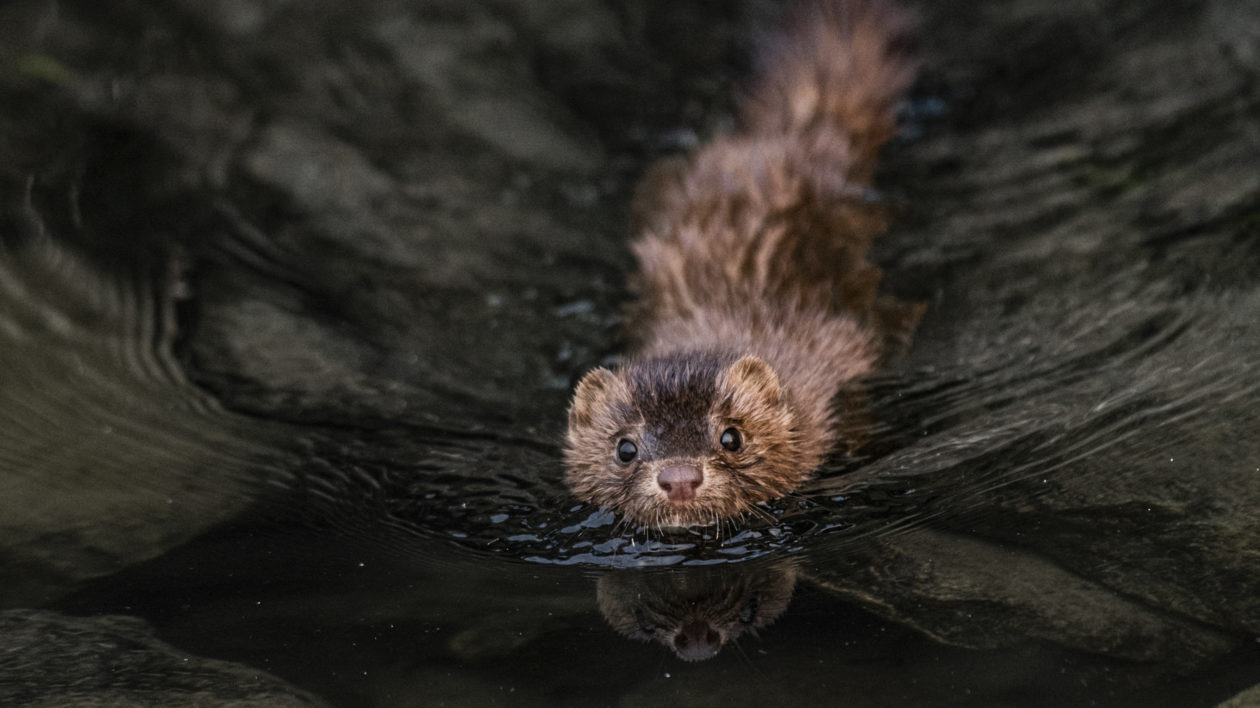
American Mink
The beaver, muskrat and nutria are all herbivores. The mink is a member of the weasel family, and it’s a predator. You will often see it running along a stream’s banks, in constant motion as it hunts. It has a distinctly weasel-like shape, and often hunches its back.
It is a good swimmer, but I notice that it rarely swims for extended periods. It will swim from one bank of the stream to another, then go on hunting along the edges.
It is very weasel-like in appearance, with a slender, stream-lined body. The tail is furred.
Mink don’t sit still often, unless tearing into a large fish. I have had my most rewarding sightings while fly fishing along famous trout streams. I’m quiet and observant, and the mink often pass within a few feet. Canoeing is another great way to observe this species.
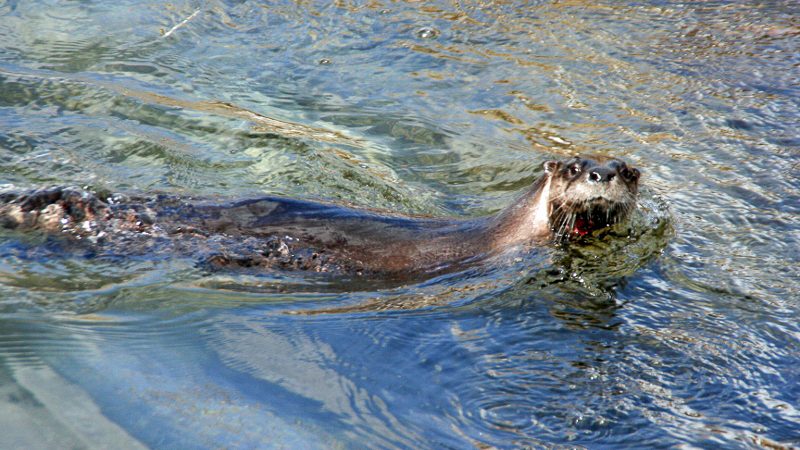
River Otters
The river otter, playful and cute, is another favorite of wildlife watchers. How do you know you have seen an otter and not a mink? The river otter is considerably larger, reaching several feet in length. Its tail is furred but longer and more streamlined than a mink’s.
The otter’s face is roundish, almost dog-like. And it is a better swimmer than a mink. You will often see an otter swimming for a distance up a river, popping its head out to look in your direction.
Otters are curious, and in protected areas like national parks will often swim closer to check you out. They are also highly effective predators. One of my favorite otter viewing sites is Trout Lake in Yellowstone National Park, where in the early summer they can be seen hunting and feasting on cutthroats very close to shore.
River otters are another great conservation success, with reintroduction programs and clean water regulations allowing their return to many parts of the United States.
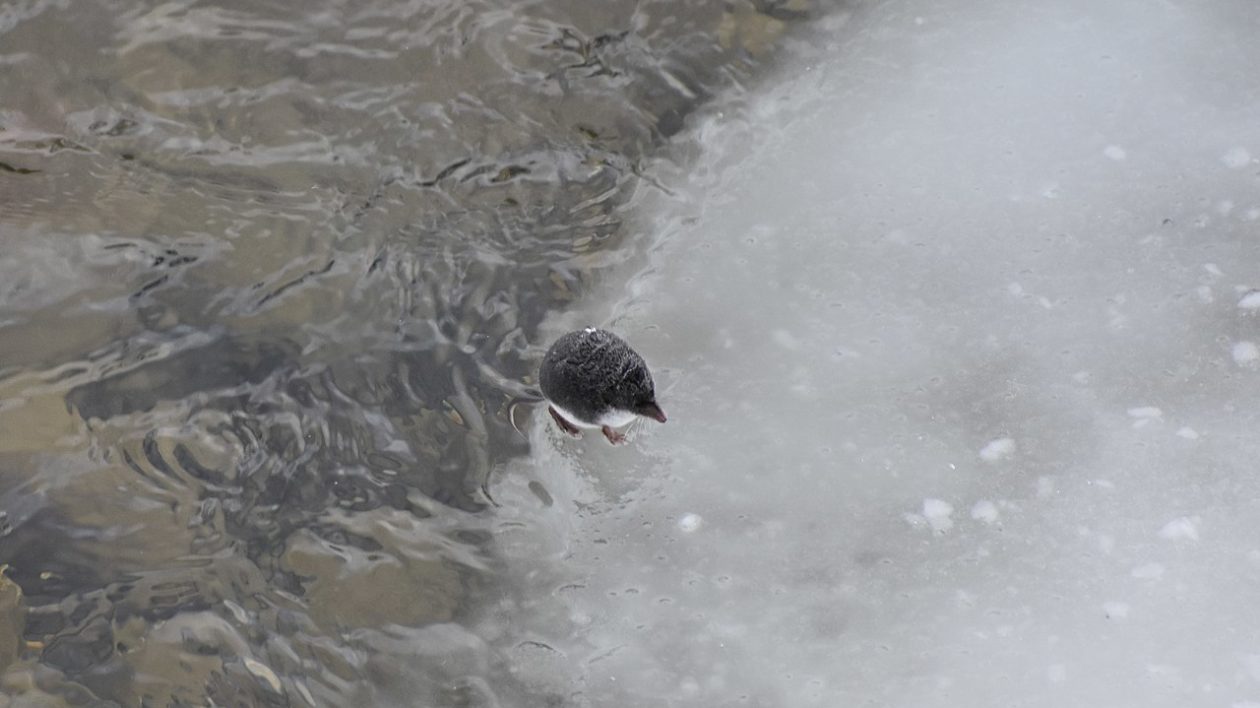
Water Shrews and Water Voles
There are two smaller, and lesser-known, mammals you may also see swimming in a stream. If you think you see an aquatic mouse, stop and take a closer look. You are extraordinarily lucky, and you may witness fascinating behavior. These two species are not closely related, but I include them together as both are quite small and rarely observed.
The water shrew has a pointy snout and preys on aquatic insects and small minnows. (See my post on shrews for more on these bizarre mammals). This is a fairly large species by shrew standards but will still look small compared to other species covered here. These shrews have bristles that allow them to skitter along the surface for a short distance. They can also dive quite well.
I saw my first one last year, while trout fishing (always a great way to see aquatic mammals) along a small stream. Water shrews are found in the northern United States and Canada.
Water voles look like plump mice. They live along streams in western North America, where you may be able to see their defined trails. They are the largest North American vole, have large hind feet and are adept swimmers. I’ve never seen one. Let me know if you have!
Any time you are near fresh water, keep an eye out for these mammals. I’ve had great sightings in wilderness rivers and along blue-ribbon trout streams, as well as greenbelt paths, farm ponds and urban nature preserves.
You have a better chance of seeing many of these animals today than you would have 50 years ago. Enjoy them, and support conservation efforts that protect clean water, wetlands and free-flowing rivers.
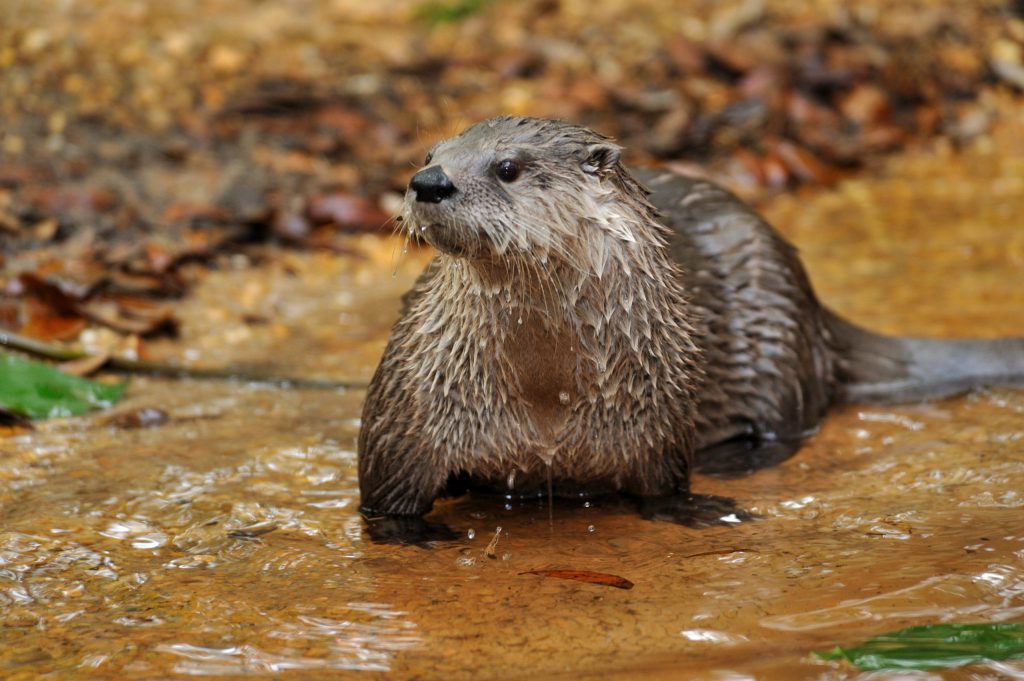



Matthew I would just like to say this was a very well written article and I enjoyed it very much. Usually skim thru or hit the high light but this time the entire article was the high light. Great info, to the point for each mammal, and the flow of the reading was like that of a good trout stream. Thank you for the good read this evening.
I live in the Sierra Nevada foothills of the Tahoe National Forest. I’ve encountered river otters, mink, and have very close-up photos of a water shrew. I wish I could post the water shrew pics here to show many views of this cool tiny furball!
thank you for these interesting insights and we have been obwerving river otters near Redding in the
Sacramento River…some of them seem larger or maybe they are just covered with weeds because they seem green.
I have moved now so I really can’t go out and check since I read the difference between otters and muskrats and beavers. Actually all of them seem to me to be too big.
I lived on a small no quake lake in southwest Michigan say 20 miles north of Ann Arbor. There was a underground den along the shore line and I never saw them come into the lake yet every morning two or three of them would play with each other in the water very close to the shore line there was no beach my lawn met the up to the water edge which was maybe 3 inches below the grass line. All I could see black shinny heads and they boned up and down dived under the water and popped up again and chased each like children do. After about twenty minutes they swam back to their nest under my lawn I didn’t see them agsin until the next morning. I enjoyed watching little ones every late spring play in the water.
One day I saw a I think it must have been a muskrat it was standing up looking it was in my back yard the opposite side of the lake it was brown and sort of unkept look his fur was sticking out here and there I could not see it’s tail as he was standing up on his or her hind legs. I don’t know if that was a parent I assumed it was but who knows. Pups in the looked black but they were all wet and sleek. I just wondered if you could possibly make a guess of what I was watching every spring?
I have a pure white squirrel in my neighborhood just one. At least that I know of. I do have a picture of you want to see it let me know. And also many black squirrels. But I do brown squirrels are the most popular .
Thought we saw a really big muskrat in the Finley wildlife refuge. We looked at pictures we took .pretty sure it is a Nutria.
I am from Iowa and last night about 11:30 p.m. I was walking from my workshop across the driveway to my house (which the outside lights were on shining down from the eves) and I saw a large rat-like (much bigger than any rat I had ever seen) animal walking right across my driveway in front of my garage doors. I stopped in my tracks and it stopped walking and looked at me momentarily then slowly went on and walked out across my yard heading east as if I wasn’t even there. I have a couple of ponds 1/4 mile from my house so I wondered if it was a muskrat moving somewhere else. I have never seen a muskrat that far away from water.
Matthew:
A friend told me that thy saw a ‘catwalker’ while kayaking in the waters of an Ontario lake. What is this mystery animal? Help…. please!
We live beside a small public lake in the Sierra Foothills east of Sacramento. This evening at dusk we saw the beaver, two initially, for the first time! Found this article to confirm our siting and it did. The head and nose made the positive identification. Tree gnawings and remanent wood chips as well as a den along the western bank bore evidence of their presence, but we weren’t convinced until now! The lodge is a mound of tree limbs and branches. We’ve observed additions this past season of a 3′ board and long green shoots of willow.
It’s easy to see the muskrats swimming toward the shoreline with vegetation, or on land sitting on their haunches munching weeds. I watched a pair scurry about a shallow bank… the chase, face to face, front to back… taking it to be muskrat love. My husband captured a photo of a Western Pond Turtle sunning on a stray floating plank, close to shore, as a muskrat swam up, boarded it and nuzzled its way to the edge as the turtle slipped off.
River otters made the scene after a five year absence, delighting us with their antics and precision fish catching skills. I once watched an otter on an exposed rock formation eating a fish while another approached. Expecting a fight, I was surprised to see the host offer the fish to its mate.
Kind regards, naturally!
The mink I saw was black, but the face was just as cute. I love to see wildlife, but never will I kill any.
Very enjoyable and educational article. Thanks again.
So useful, so enjoyable. I’ve bookmarked it in addition to your Guide to Commonly Misidentified Mammals. The power of the mind to change what you’re seeing in front of you is both remarkable and cautionary, especially when you think of eyewitnesses to crimes. But never mind that. What a joy to see our freshwater wildlife in photos and run their comparisons side by side. Thanks Matt!
Very cool.
Thank you,
Um, just looking at the image in this article “A beaver feeding in Colorado. © Tila Zimmerman/TNC Photo Contest 2019”, that looks a lot more like a muskrat than a beaver (i.e., tiny ears, guard hairs and undercoat colour), not to mention the small size and body shape :).
You are indeed correct! That is a muskrat and somehow I missed that. I corrected it–and added a note that our very own photo archive had this misidentified.
Really enjoyed this…thanks.